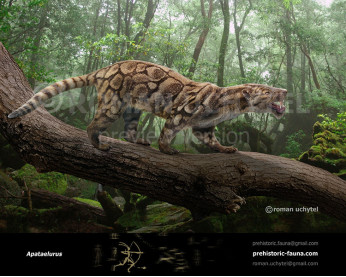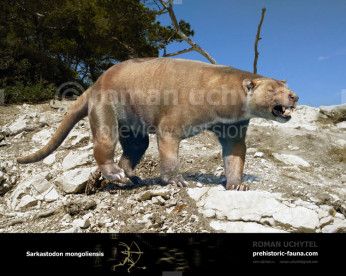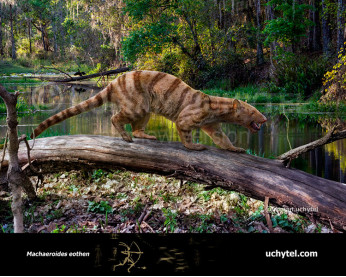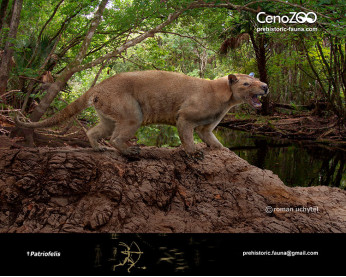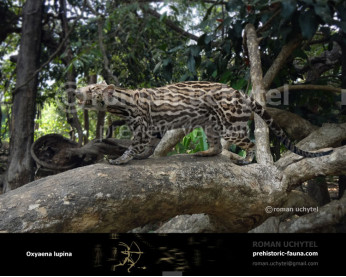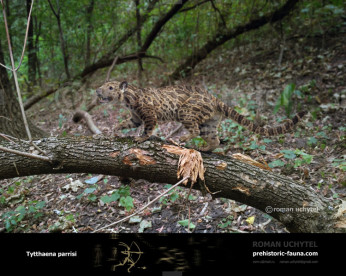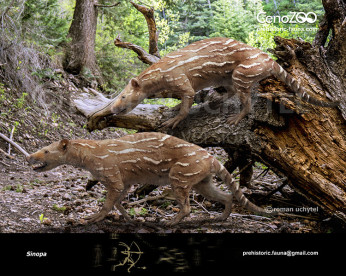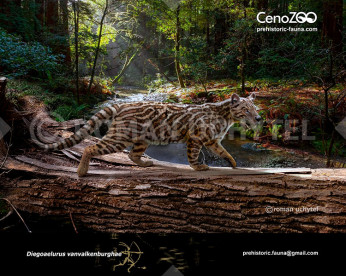Palaeonictis
2029620296Palaeonictis (†Palaeonictis (de Blainville, 1842))
Order: †Oxyaenodonta
Family: †Oxyaenidae
Temporal range: during the late Paleocene to the early Eocene (Europe and North America, 56.2–50.5 Ma)
Dimensions: length - 140 (200) cm, height - 45 (60) сm, weight - 17-50 kg
A typical representative: †Palaeonictis gigantea
Palaeonictis is a genus of subfamily Palaeonictinae within extinct family Oxyaenidae, would have resembled a large modern wolverine. This predatory mammal had heavy jaws and blunt robust teeth more suited for crushing bones, than slicing meat. This meant that the Palaeonictis was at least a part-time scavenger. The biggest species, Palaeonictis peloria is known from an incomplete jaw that must have measured over 20 centimetres. This animal was the largest carnivore in its ecosystem. 55 million years ago, P. occidentalis (the size of a bear) evolved into the smaller P. wingi (the size of a coyote) within 200,000 years in the early Eocene due to global warming (paleoclimatology). By the end of the early Eocene, Palaeonictis disappeared from North America, and by the early Eocene the last species of P. gigantea had vanished from Europe. In fact, the entire family Oxyaenidae had become extinct worldwide (although its sister group Hyaenodonta continued to thrive for a while). This is traditionally assumed to be due to increased competition from miacids and nimravids belonging to the more successful order Carnivora, which eventually replaced earlier carnivorous mammal clades in the later Neogene as the world's top predators, though no evidence of direct competition is known, and carnivorans may have simply filled vacated niches.
Palaeonictis (†Palaeonictis (de Blainville, 1842))
Order: †Oxyaenodonta
Family: †Oxyaenidae
Temporal range: during the late Paleocene to the early Eocene (Europe and North America, 56.2–50.5 Ma)
Dimensions: length - 140 (200) cm, height - 45 (60) сm, weight - 17-50 kg
A typical representative: †Palaeonictis gigantea
Palaeonictis is a genus of subfamily Palaeonictinae within extinct family Oxyaenidae, would have resembled a large modern wolverine. This predatory mammal had heavy jaws and blunt robust teeth more suited for crushing bones, than slicing meat. This meant that the Palaeonictis was at least a part-time scavenger. The biggest species, Palaeonictis peloria is known from an incomplete jaw that must have measured over 20 centimetres. This animal was the largest carnivore in its ecosystem. 55 million years ago, P. occidentalis (the size of a bear) evolved into the smaller P. wingi (the size of a coyote) within 200,000 years in the early Eocene due to global warming (paleoclimatology). By the end of the early Eocene, Palaeonictis disappeared from North America, and by the early Eocene the last species of P. gigantea had vanished from Europe. In fact, the entire family Oxyaenidae had become extinct worldwide (although its sister group Hyaenodonta continued to thrive for a while). This is traditionally assumed to be due to increased competition from miacids and nimravids belonging to the more successful order Carnivora, which eventually replaced earlier carnivorous mammal clades in the later Neogene as the world's top predators, though no evidence of direct competition is known, and carnivorans may have simply filled vacated niches.

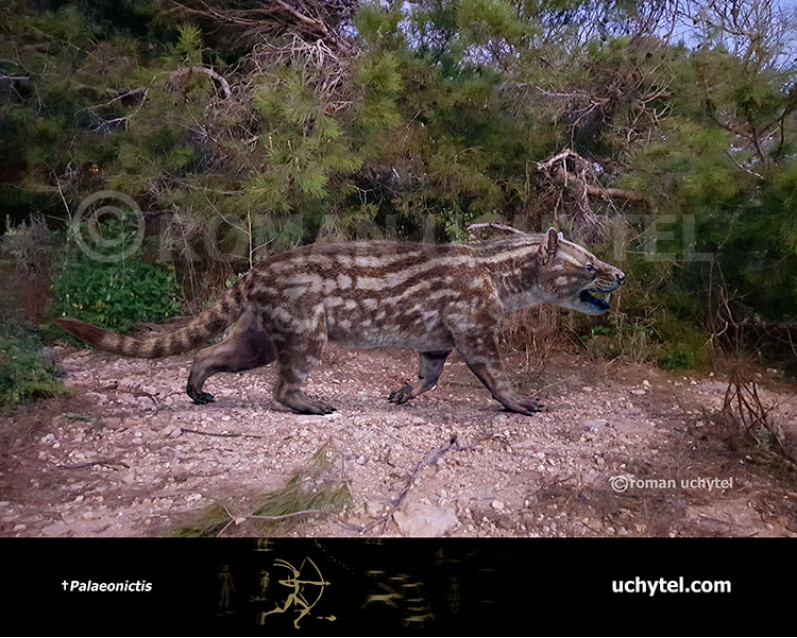
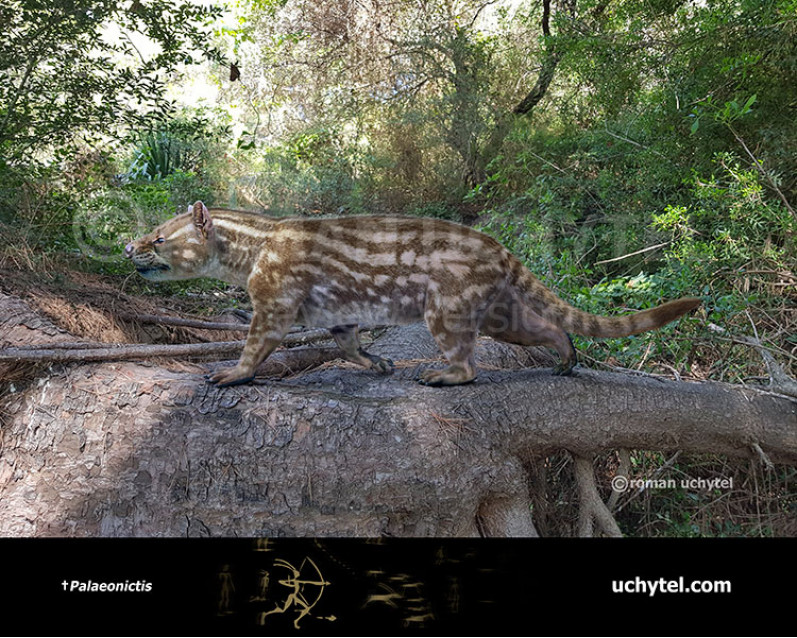
1-797x638.jpg)
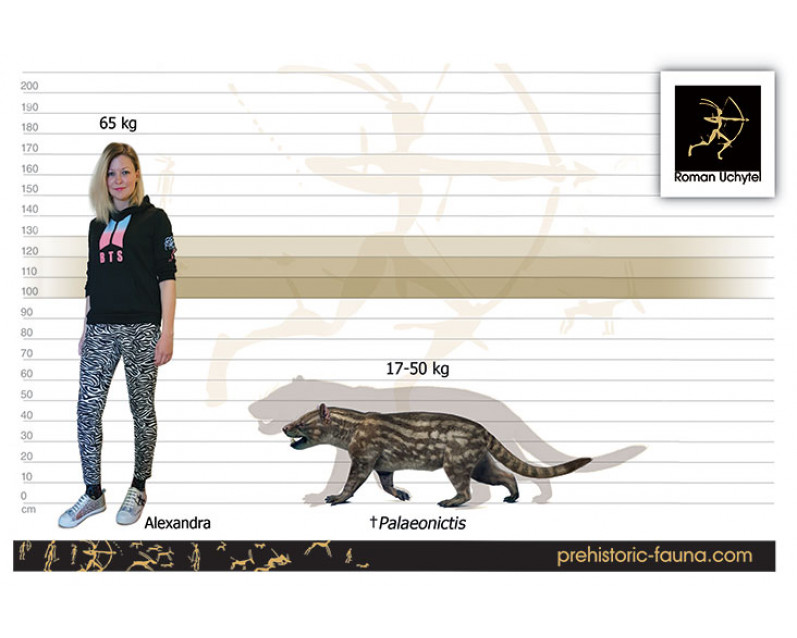


1-70x56.jpg)

